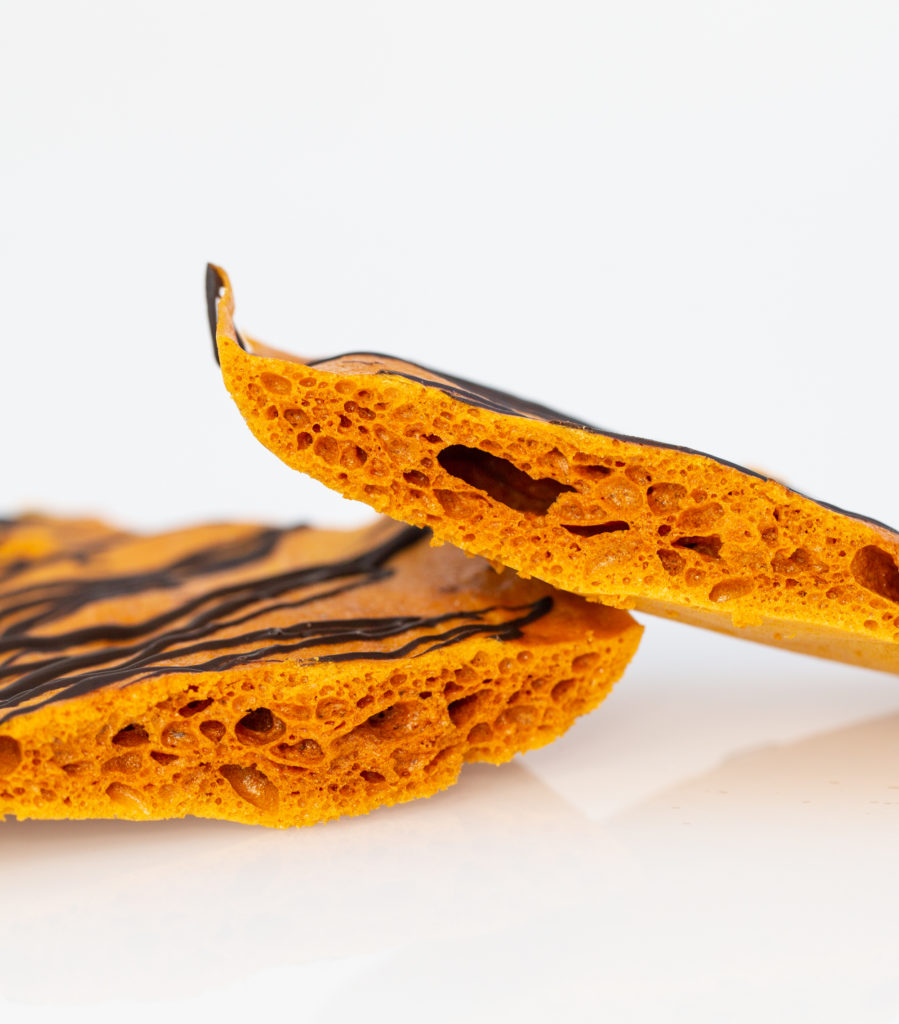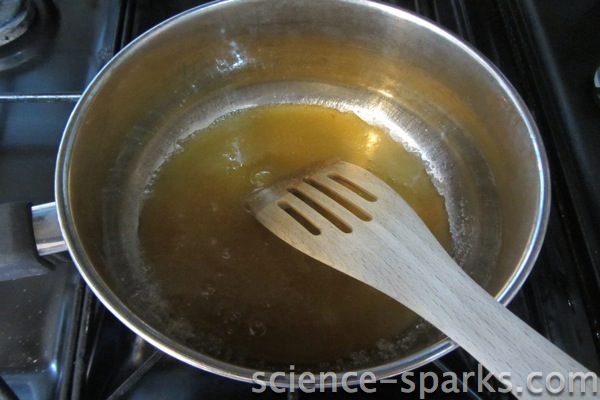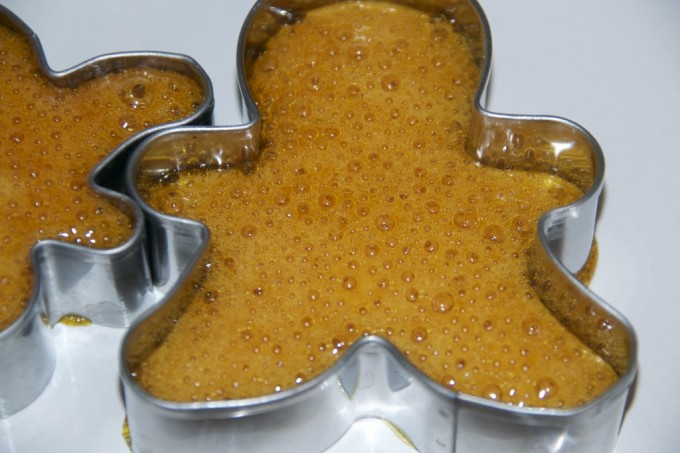‘Thank crunchie, it’s Friday’ seems the perfect phrase for today’s experiment as it involves learning how to make honeycomb with our easy honeycomb recipe. Once you’ve made the honeycomb and learned about the science behind the bubbles, the rest is up to you. Add melted chocolate, sprinkles, popping candy or anything else to make it an even tastier treat.

Easy Honeycomb Recipe
Honeycomb ingredients
100g of sugar
1 tablespoon of water
2 tablespoons of golden syrup
1 teaspoon of bicarbonate of soda
How to make honeycomb
1. Put all the ingredients except the bicarbonate of soda into a saucepan and place on a low heat
2. Line a baking tray with silver foil.
3. Stir the mixture until all the sugar has dissolved. Raise the heat slightly so that it bubbles, and stir occasionally until you cannot feel any sugar at the bottom of the pan.

4. Take the pan off the heat.
5. Add the bicarbonate of soda and stir!
5. Watch what happens – it should froth up with lots of lovely bubbles.
6. Pour the mixture into your baking tray or into a mould.
7. Allow the honeycomb to cool. When it’s solid, carefully break it up into tasty treats. Add any extra ingredients or crush and sprinkle over ice cream!
Why is honeycomb full of bubbles?
The bicarbonate of soda breaks down with heat to release carbon dioxide gas. The gas causes the sugar and syrup mixture to froth and bubble. The bubbles become trapped in the mixture, where they set as the mixture cools.
This activity is one of many delicious kitchen science experiments you can find in Snackable Science!

Last Updated on April 3, 2023 by Emma Vanstone


Hi, just discovered you, and I’m very excited! A quick question: if I don’t have golden syrup (hard to get in Switzerland) what could I use instead?
Thanks.
Maybe corn syrup?
I wonder if this is like the hokey-pokey we came across while traveling in New Zealand? I can’t wait to try this.
I’ve never seen golden syrup in the US before, but I haven’t looked. I have found a substitute at http://www.foodsubs.com/Syrups.html
“Combine two parts light corn syrup plus one part molasses OR equal parts honey and corn syrup OR maple syrup (This is thinner, and not as sweet.) OR dark corn syrup (This is thinner and not as sweet as golden syrup. If you like, try reducing the corn syrup in a saucepan to thicken it.) OR light corn syrup (This is thinner and not as sweet or flavorful as golden syrup. If you like, try reducing the corn syrup in a saucepan to thicken it.) “
That looks tasty. I have voted for you both – best of luck.
Thank you so much! xx
Well done for becoming a Mads finalist, you get my vote again. We have made honeycomb before once and really enjoyed it, you have made me think we should do it again…Poppy had great fun and I love the idea of something being scientific that you can eat with ice cream 🙂 xx
oh yes, i plan to eat mine with ice cream! Thanks so much for voting for us. x
We made this at my eldest’s birthday science party tonight – the boys all loved it 🙂 Thank you